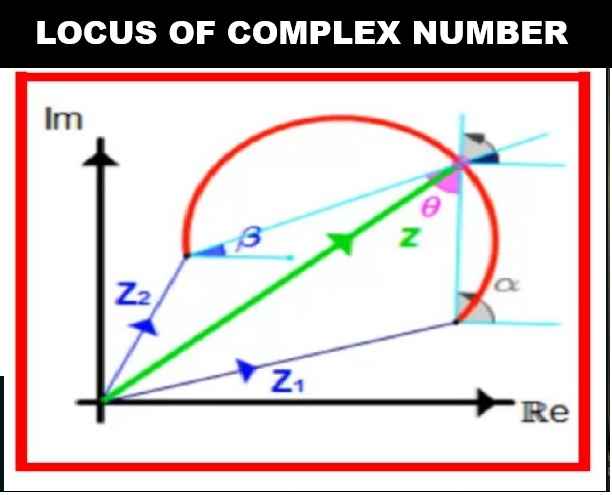Health and Hygiene Class-6 Srijan ICSE Biology Solutions Chapter-7 Veer Bala Rastogi Srijan Publishers Solutions. We Provide Step by Step Solutions of Fill in the blanks, Give functions, Define the following, Differentiate between the following, Match the following, True and False, MCQs and Answer these Questions of Veer Bala Rastogi Srijan Biology Publishers. Visit official Website CISCE for detail information about ICSE Board Class-6.
Health and Hygiene Class-6 Srijan ICSE Biology Solutions Chapter-7
| Board | ICSE |
| Class | 6th |
| Subject | Biology |
| Book Name | Srijan |
| Chapter-7 | Health and Hygiene |
| Unit-1 | Health and Hygiene |
| Topic | Solution of exercise questions |
| Session | 2023-24 |
Health and Hygiene ICSE Class-6th Srijan
Biology Solutions Chapter-7
A. Fill in the blanks with suitable words:
1. Disease caused due to vitamin C deficiency is called scurvy.
2. The disease-causing microorganisms are called pathogens.
3. Anaemia is caused due to the deficiency of iron mineral and vitamin B12.
4. Calcium is required for the health of healthy bones and teeth.
5. Kwashiorkor is caused due to deficiency of dietary proteins.
6. Disease caused by the bite of rabid dog is Rabies.
B. Give one word for the following:
Question: 1. Taking care of one’s own body.
Answer: Personal hygiene
Question: 2. Diseases which develop within the womb.
Answer: Gestational
Question: 3. Poor growth and improper functioning of reproductive organs.
Answer: Infertility
C. Define these terms:
Question: 1. Disease
Answer: Disease, any harmful deviation from the normal structural or functional state of an organism, generally associated with certain signs and symptoms and differing in nature from physical injury.
Question: 2. Pathogen
Answer: A pathogen is defined as an organism causing disease to its host, with the severity of the disease symptoms referred to as virulence. Pathogens are taxonomically widely diverse and comprise viruses and bacteria as well as unicellular and multicellular eukaryotes.
Question: 3. Immunisation
Answer: A process by which a person becomes protected against a disease through vaccination. This term is often used interchangeably with vaccination or inoculation.
Question: 4. Compostable waste
Answer: Compostable wastes are biodegradable wastes such as food waste, garden waste, animal waste and human waste.
Question: 5. Antibodies
Answer: Antibodies are proteins that protect you when an unwanted substance enters your body.
Question: 6. Landfilling
Answer: A system of trash and garbage disposal in which the waste is buried between layers of earth to build up low-lying land. called also sanitary landfill.
D. Differentiate between the following:
Question: 1. Noncommunicable diseases and communicable
Answer:
| Non communicable diseases | Communicable diseases |
| 1. Non communicable diseases are the ones which cannot be transferred from one person to another through contact, air, water, etc. | 1. Communicable diseases can be transferred from one individual to another through contact, air, water, etc. |
| 2. They are non-infectious and not caused by any infectious agent. | 2. These are highly infectious and caused by infectious agents like bacteria, viruses, etc. |
| 3. These diseases can be inherited. | 3. These diseases cannot be inherited. |
| 4. Example: Diabetes, Heart diseases | 4. Example: Common cold, Tuberculosis, AIDS |
Question: 2. Malnutrition and undernutrition
Answer:
| Malnutrition | Undernutrition |
| 1. Not enough nutrients is called undernutrition or undernourishment while too much is called overnutrition. | 1. Undernutrition includes being underweight for one’s age, too short for one’s age (stunted), dangerously thin (wasted), and deficient in vitamins and minerals (micronutrient malnutrition). |
| 2. Malnutrition is often used to specifically refer to undernutrition where an individual is not getting enough calories, protein, or micronutrients. | 2. The term malnutrition refers to both undernutrition and overnutrition. |
Question: 3. Hemophilia and thalassemia
Answer:
| Hemophilia | Thalassemia |
| 1. X-linked recessive disorder. | 1. Autosome-linked recessive disorder. |
| 2. Clotting factors are lacking. | 2. Hemoglobin is lacking. |
| 3. Blood clotting is affected. | 3. Anemia is the characteristic of this disease. |
E. Answer these questions:
Question: 1. List the various causes of diseases.
Answer: List the various causes of diseases:
- Bacteria. These one-cell organisms are responsible for illnesses such as strep throat, urinary tract infections and tuberculosis.
- Viruses. Even smaller than bacteria, viruses cause a multitude of diseases ranging from the common cold to AIDS.
- Fungi.
- Parasites.
Question: 2. List different ways by which communicable diseases are transmitted.
Answer: Communicable disease:
- These diseases spread from one person to another through the air, water, food, insects, and physical contact.
- This disease is caused by microorganisms or pathogens such as bacteria, fungi, viruses, and protozoa, e.g., Tuberculosis, AIDS, malaria, etc.
Question: 3. What is health? What will you do to lead a healthy life?
Answer: It is a state of a person’s complete physical, mental, and social well-being, and not merely the absence of disease.
To maintain good health, one needs to:
- Eat a balanced diet.
- Do physical exercise, recreation, adequate sleep, and rest.
- Take care of personal and community hygiene.
- Drink clean and purified water and eat fresh food.
- Breath in fresh and clean air.
- Keep away from tobacco, alcohol, and drugs.
- Visit a doctor regularly to follow regular checkups.
- Get regular vaccinations.
Question: 4. What are deficiency diseases? Name some deficiency diseases.
Answer: Diseases that occur due to lack of nutrients over a long period are called deficiency diseases. Examples are – Scurvy, Night blindness, Rickets, Beriberi, Goiter, Anaemia.
Question: 5. What is meant by PEM? Name the disease caused due to PEM.
Answer: PEM Protein energy malnutrition is a term used to describe diets which lack proteins and energy giving carbohydrates. They are common among children. Kwashiorkor and marasmus are diseases which result from PEM.
Question: 6. What steps would you take to prevent infectious diseases?
Answer: The spread of infectious diseases:
- Immunise against infectious diseases.
- Wash and dry your hands regularly and well.
- Stay at home if you are sick.
- Cover coughs and sneezes.
- Clean surfaces regularly.
- Ventilate your home.
Question: 7. List the sources of vitamins A, B, C and D. Also mention the diseases caused by their deficiency.
Answer: List the Sources of vitamins:
A: It can be obtained from milk, carrot, fish liver oil, eggs, green vegetables, papaya, etc.
B: It comprises a group of vitamins that can be obtained from eggs, meat, whole grains, cereals, fish, potatoes, etc.
C: It can be obtained from citrus fruits, tomato, guava, amla, etc.
D: It is obtained from milk, butter, green vegetables and sunlight(which helps our skin to prepare it).
K: It is obtained from egg yolk, soyabean oil, green vegetable(like spinach), etc.
Chart showing various vitamins and disorders that are caused due to its deficiency:
Question: 8. What are heart diseases? Mention some such diseases.
Answer: The term “heart disease” refers to several types of heart conditions. The most common type of heart disease in the United States is coronary artery disease (CAD), which affects the blood flow to the heart. Decreased blood flow can cause a heart attack.
Mention some such diseases:
- Unstable angina. Unstable angina can be undiagnosed chest pain or a sudden worsening of existing angina.
- Heart attack.
- Heart failure.
- Arrhythmia (abnormal heart rhythms)
- Valve disease.
- High blood pressure.
- Congenital heart conditions.
- Inherited heart conditions.
Question: 9. How would you keep your surroundings clean?
Answer: You keep your surroundings clean:
- Reduce the usage of your electrical appliances. This serves as the best means to conserve the energy.
- Drive your car less.
- Recycle the waste products.
- Reduce carbon footprints.
- Grow your food locally.
- Reduce contaminants.
- Avoid the pollution.
Question: 10. What methods are used for disposal of waste?
Answer: Waste disposal methods:
- Recycling. Incineration.
- Other thermal treatment plants. Chemical-physical and biological treatment.
- Chemical-physical and biological treatment. Landfills.
- Landfills. Collection and logistics.
Question: 11. Give the colour code for bins used for dumping dry and wet wastes.
Answer: These wastes require separate dustbins. Therefore, a single colour is allocated to every kind of waste. Green, as well as blue colour, is used to segregate two different types of wastes. The green dustbin is used for wet waste and a blue dustbin is used for dry waste.
F. Match the column:
| Column A | Column B |
| 1. Vitamin A | (a) Tuberculosis |
| 2. Iodine | (b) Rickets |
| 3. BCG | (c) Malaria |
| 4. Calcium | (d) Goiter |
| 5. Anopheles | (e) Night blindness |
Answer:
| Column A | Column B |
| 1. Vitamin A | (a) Night blindness |
| 2. Iodine | (b) Goiter |
| 3. BCG | (c) Tuberculosis |
| 4. Calcium | (d) Rickets |
| 5. Anopheles | (e) Malaria |
G. State whether the following statements are true of false. If false, rewrite the correct form of statements:
| Statements | True/False |
| 1. Osteomalacia is an iodine deficiency disease. | F |
| 2. Allergy is caused by protozoans. | T |
| 3. Polio is a bacterial disease. | F |
| 4. Blue bin is used for wet waste. | F |
H. Encircle the odd one out. Give reasons for your choice:
Question: 1. Proteins, fats, minerals, cancer.
Answer: Odd one out: Cancer
Give reasons: Cancer is a disease caused when cells divide uncontrollably and spread into surrounding tissues but proteins, fats, and minerals are nutrients that are essential for life.
Question: 2. Measles, influenza, typhoid, rabies
Answer: Odd one out: Typhoid
Give reasons: Typhoid is caused by the bacterium Salmonella typhi. It is caused by the consumption of contaminated food and water. Symptoms of typhoid include continuous fever, red eruptions on chest and abdomen, weakness, and loss of appetite.
Question: 3. Bronchitis, silicosis, arthritis, fever
Answer: Odd one out: fever
Give reason: Fever is odd one because spread in bacteria. Explore all similar answers.
Question: 4. Paper, glass, tin, cotton
Answer: Odd one out: Cotton
Give reason: Cotton is the odd one out Cotton is a wet waste Also called as compostable that can decay easily decay Paper glass and tin are dry waste.
I. Give reasons for the following:
Question: 1. You are advised not to eat cut fruits from roadside vendors.
Answer: Due to pollution different gases r present in air which makes the fruit poisonous. that is why we should not eat cut fruits from the roadside vendors.
Question: 2. There are more chances of catching cold and influenza in public places.
Answer: Then, you need to ensure good hand hygiene. It is the need of the hour to cover the mouth while coughing and sneezing, wash your hands with soap and water or sanitize from time to time.
Question: 3. Cigarette smoking is injurious to health.
Answer: Smoking can cause lung disease by damaging your airways and the small air sacs (alveoli) found in your lungs. Lung diseases caused by smoking include COPD, which includes emphysema and chronic bronchitis. Cigarette smoking causes most cases of lung cancer.
Question: 4. Driving after taking alcohol may lead to accidents.
Answer: It decreases reaction time of a human body. Limbs take more to react to the instructions of brain. It hampers vision due to dizziness. Alcohol dampens fear and incite humans to take risks.
J. Multiple Choice Questions:
1. Communicable diseases are caused by
(a) Viruses
(b) Bacteria
(c) Fungi
(d) All of these
Answer: option (d) All of these is correct.
2. Lack of insulin leads to
(a) Diabetes
(b) Goiter
(c) Arthritis
(d) Atherosclerosis
Answer: option (a) Diabetes is correct.
3. Protein deficiency leads to
(a) Plague
(b) Marasmus
(c) Anaemia
(d) Scurvy
Answer: option (b) Marasmus is correct.
4. Botulism is
(a) Heart disease
(b) Malaria
(c) Allergy
(d) Food poisoning
Answer: option (d) Food poisoning is correct.
5. Which of the diseases is transmitted by a vector?
(a) Dengue
(b) Influenza
(c) Jaundice
(d) Arthritis
Answer: option (a) Dengue is correct.
6. Which of the following is a disease caused by bacteria?
(a) Malaria
(b) Rabies
(c) AIDS
(d) Cholera
Answer: option (d) Cholera is correct.
7. Which of the following is a communicable disease
(a) Measles
(b) Cancer
(c) Heart stroke
(d) Allergy
Answer: option (a) Measles is correct.
8. This is the polio vaccine.
(a) BCG
(b) DPT
(c) MMR
(d) OPV
Answer: option (d) OPV is correct.
9. Personal hygiene includes care of
(a) Eyes
(b) Ears
(c) Nose
(d) All of these
Answer: option (d) All of these is correct.
10. Which waste will not be thrown in Blue bin?
(a) Glass
(b) Tin can
(c) Plastic mug
(d) Leather purse
Answer: option (d) Leather purse is correct.
K. Diagram-based questions:
1. Look at the given picture and answer the questions that follow.

Question: (a) What disease is shown in the figure?
Answer: Scurvy disease is shown in the figure.
Question: (b) What is the cause of this disease?
Answer: Scurvy is a disease caused by a significant lack of vitamin C in your diet. The medical definition of scurvy is severe vitamin C (ascorbic acid) deficiency.
Question: (c) What should we eat to avoid this disease?
Answer: To avoid any risk, make sure to eat plenty of fresh fruits and vegetables with your diet. Citrus fruits such as oranges and grapefruits are great choices, but you can also get plenty of this nutrient through potatoes, tomatoes and even strawberries.
— : End of Health and Hygiene Class-6 Srijan ICSE Biology Solutions Chapter-7:–
Return to- ICSE Class -6 Srijan Biology Solutions
Thanks.
Please share with your friends if you find it useful.


